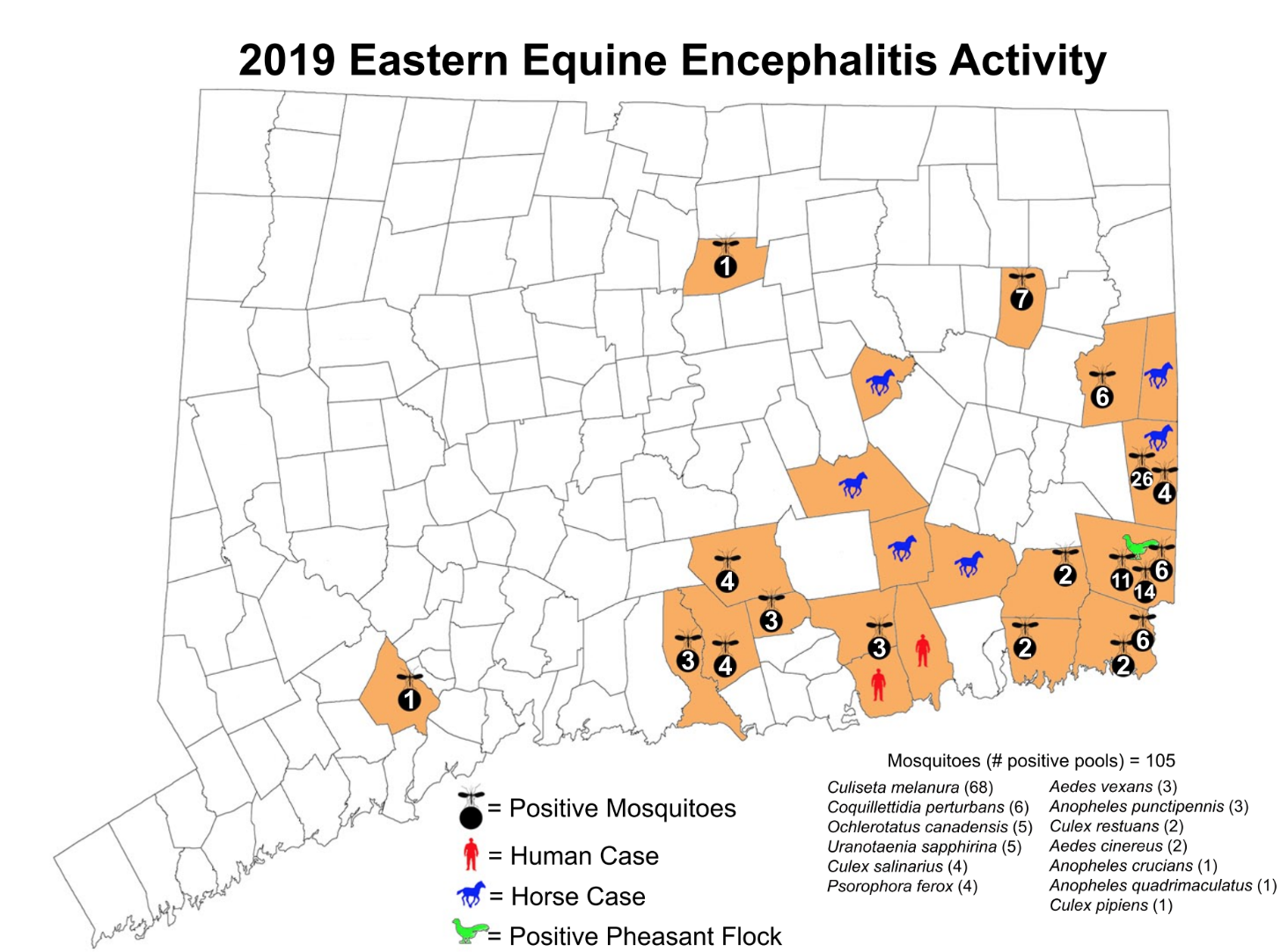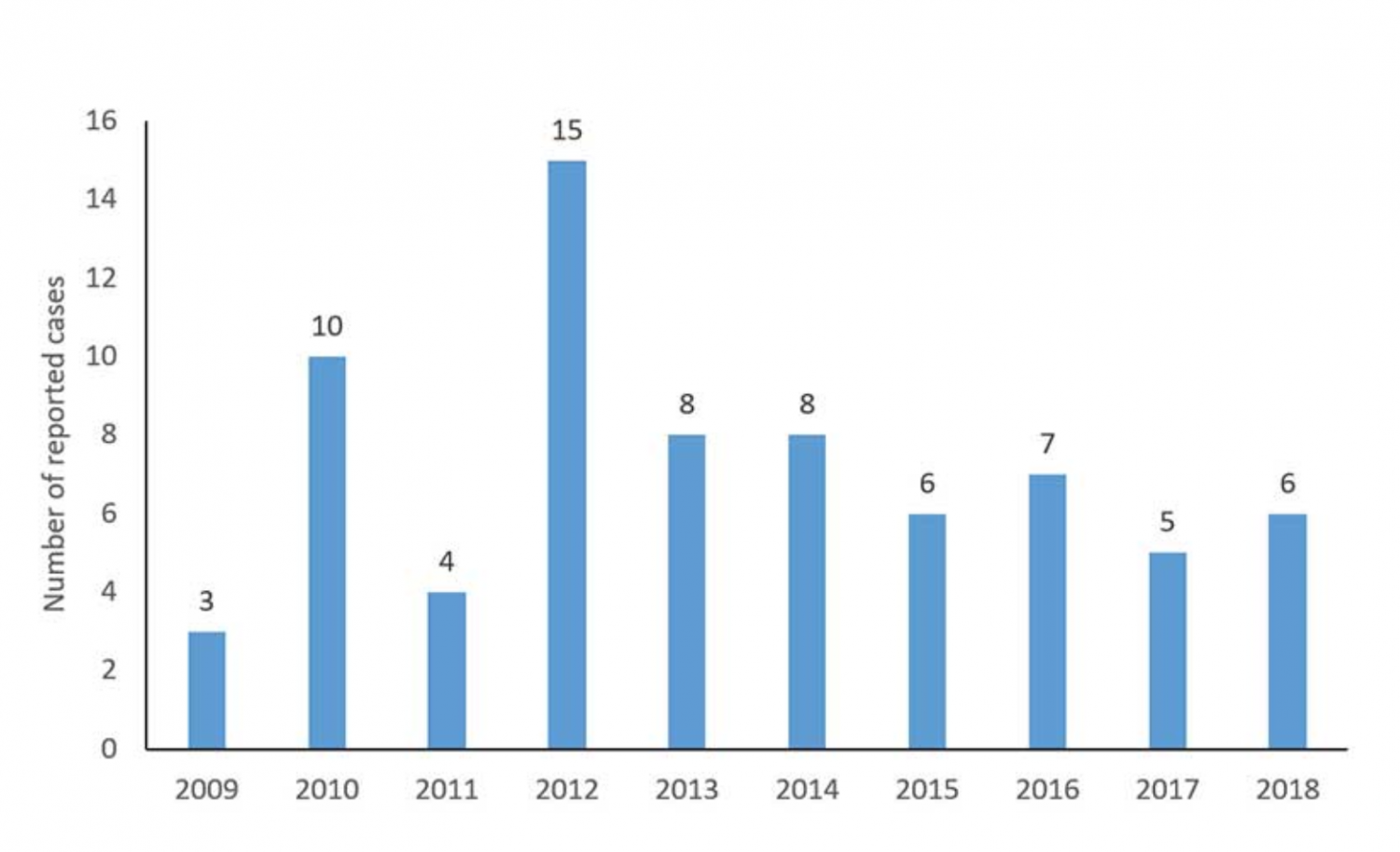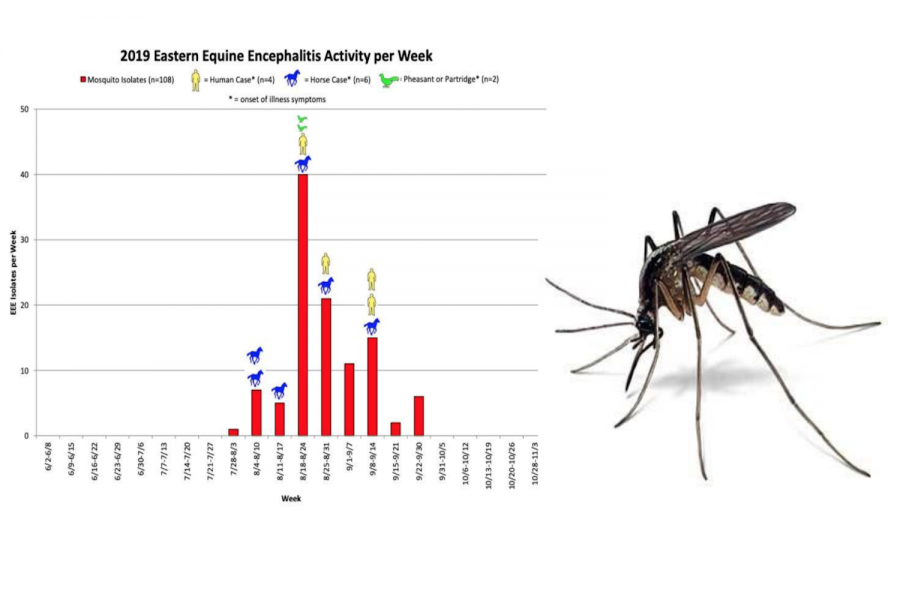EEE kills Connecticut resident, marking the third death in the state
The deadly EEE virus spreads throughout the United States and causes a record number of deaths.
The chart above indicates the time period of the EEE virus diagnostic for humans, birds, and horses. Christine Guido ’20
Reports of the Eastern equine encephalitis (EEE) virus are spreading across Connecticut. Connecticut health officials announced the third death from EEE after an East Haddam resident between the ages of 60 and 69 died, and a fourth person remains hospitalized, according to courant.com.
EEE, commonly referred to as triple E, belongs to a category of viruses known as arboviruses, or arthropod-borne viruses. Blood-sucking insects such as mosquitos and ticks transmit such arboviruses. Specifically, EEE is spread by the bite of a culiseta melanura mosquito, a black-tailed mosquito, according to childrenshospital.org. Mary B Walsh Registered Nurse, School Nurse, explained the severity of the virus and its symptoms.

“EEE is a rare disease,” Nurse Walsh said. “Symptoms of the EEE virus can occur four to ten days after being bitten by an infected mosquito. A person who is concerned that they might have contracted the virus should consult their healthcare provider for proper diagnosis.”
Once symptoms begin, they can range from a mild fever to a coma. Other symptoms include high fever, headache, fatigue, nausea, vomiting, or neck stiffness, according to childrenshospital.org.
Annual reports show an average of seven human cases in the United States, according to the United States Centers for Disease Control and Prevention (CDC). About 3o percent of all cases result in death.
From 2009 to 2018, EEE caused a total of 30 deaths, while in 2019 alone, the CDC received a report of 35 confirmed cases. Four cases emerged in Connecticut, one in Indiana, twelve in Massachusetts, ten in Michigan, one in North Carolina, three in New Jersey, three in Rhode Island, and one in Tennessee, according to cdc.gov.
There is currently no cure for EEE. However, doctors are able to provide supportive treatment to lower a patient’s fever and ease the pressure on the brain and spinal cord. Those who survive the disease are permanently disabled and only about half recover completely, according to portal.ct.gov.

The Triple E virus is mainly reported from late spring to early fall, so the frequency of cases should begin to decline in the next month. However, the CDC warns that there is a possibility for EEE to continue to spread during the winter, especially in warmer climates such as in the Gulf States, according to time.com.
Nurse Walsh further explained the precautions to take to help avoid contracting the triple E virus.
“Avoid areas that have been identified as having virus activity especially for people who engage in outdoor activities,” Nurse Walsh said. “Persons over 50 or younger than 15 are at a greater risk of the severe disease. Use insect repellent certified by the EPA [United States Environmental Protection Agency], dress in clothing that covers arms and legs, eliminate mosquito breeding sites, and secure intact screens on windows and doors to keep mosquitoes out.”

Christine is proud to be one of the 2019-2020 Editors-in-Chief. Last year, she enjoyed working as the News Section Editor and composing the weekly “Humans...











